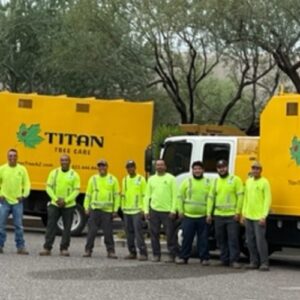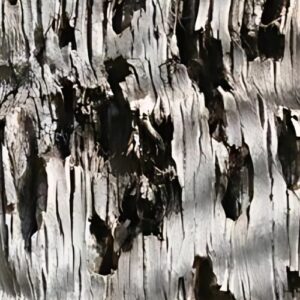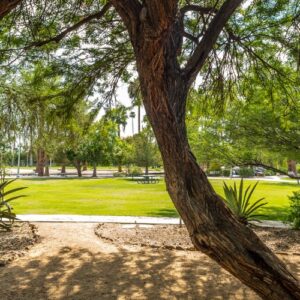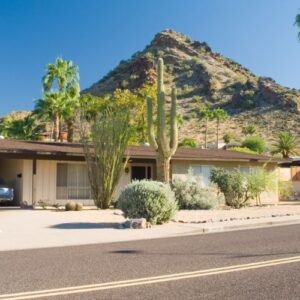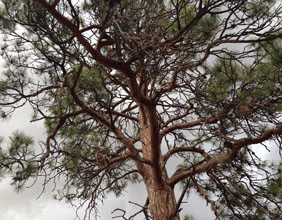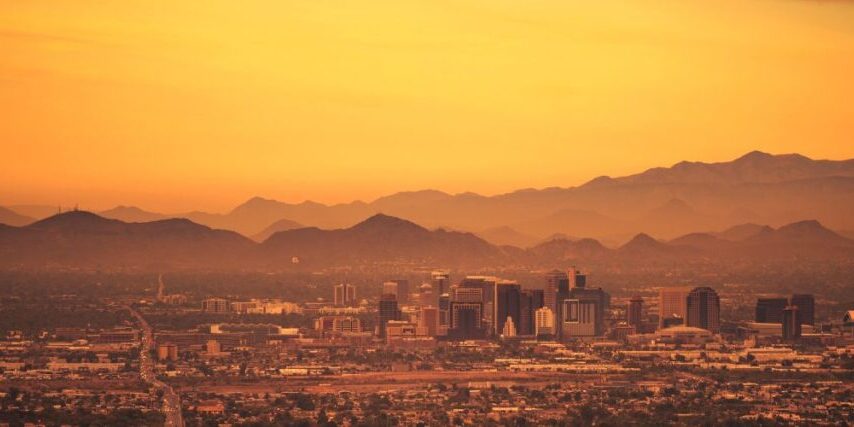
Have you heard of the term “urban heat island”? If you haven’t yet, this is a term you may be hearing more and more frequently.
Compared to rural areas, the rising temperatures in urban and suburban areas are becoming more noticeable in cities worldwide. Here in the Phoenix area, the urban heat island effect is particularly evident as our communities continue to expand and new construction stretches further into the surrounding desert.
This article will explain what urban heat islands are, what causes them, how the Phoenix area deals with the urban heat island effect, how it will impact you, and what you can do on your property.
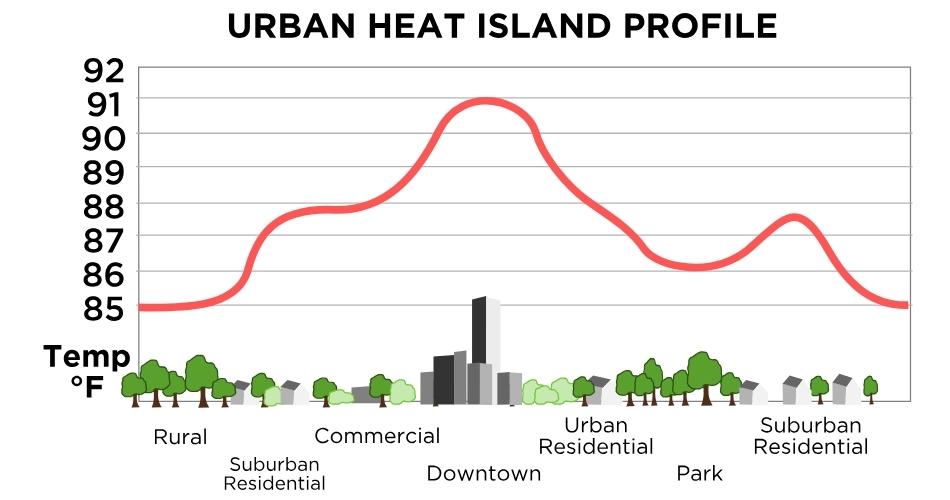
What is an Urban Heat Island?
An urban heat island is a region where the metropolitan area is significantly warmer than the surrounding rural areas. Many factors contribute to an urban heat island, including non-reflective roads and building materials, a lack of green spaces, the inability of water to soak into pavement, and more.
Human-Made Materials Don’t Reflect Heat
You may remember learning in science class that dark objects absorb the sun while lighter colors reflect it. What you may not have learned, however, is how manufactured products (buildings, roads, sidewalks, parking lots) also hold onto heat, while nature (including trees, plants, cactus, vines, shrubs, flowers, and grass) uses the sun for photosynthesis while keeping the surrounding area cooler.
Vegetation doesn’t only shade the area; it also releases water into the air through a process called transpiration. This release of water vapor also adds to the cooling effect of trees and plants.
Urban Areas Burn Off Energy, Creating Heat
Buildings close together (especially buildings with insulation) contribute to the warmer temperatures in urban environments. Tall buildings can block or trap wind, reducing airflow and wind speed (which can cool the air temperature).
Cars, buses, air conditioning units, and other energy-creating sources also add to the heat. Even an increase in the number of people, each expending energy, can add to a city’s overall heat. Think about how much warmer it is in a room with many people packed together.
Impervious Surfaces Don’t Allow Water Flow
Human-made materials are often impervious surfaces, meaning water can’t flow through them. Compare a black-topped parking lot to an open desert area, for example. Water cannot seep through asphalt into the ground below but instead runs off into the nearest drain.
In wild desert areas, water is slowly absorbed into the ground, watering the vegetation. The area is cooled as the water flows through the site and eventually evaporates through plant leaves.
The Sun is Intense in Phoenix
As a property owner in Maricopa County, you already know the sun’s power here, especially during summer. You can fry an egg on a sidewalk, bake a batch of cookies in a hot car, or receive burns from falling on asphalt.
We also see a lot of sunny days in our region – the Phoenix area can expect around 300 sunny days a year.
While sunny days don’t automatically mean an urban heat island will form, it is one of the reasons that the Phoenix area is warming faster than other metropolitan areas.
All These Things Together Create Urban Heat Islands
When human-made objects replace nature, the temperature rises. When an entire city has more sidewalks than trees, it becomes an “urban heat island,” where heat is trapped in an urban area, raising the temperature significantly. An urban heat island is any metropolitan area that is warmer than the surrounding rural areas.
See a simple explanation of urban heat islands from NASA >>
Learn more about urban heat islands from National Geographic >>
Explore the EPA’s resources on heat islands >>
View Google Earth’s presentation on Tokyo’s Heat Island Effect >>
Phoenix-Area Urban Heat Island
Phoenix has been identified as the big city with the fastest-warming temperatures due largely to the urban heat island effect. It’s not just downtown Phoenix, however; the urban heat island in the Phoenix area keeps expanding as new construction builds out more of our area.
We also have one of the “largest urban heat island magnitudes in the world, with up to a 10-to-14-degree Fahrenheit temperature difference between Phoenix Sky Harbor Airport and Wickenburg, Queen Creek, Casa Grande, or Maricopa.”
The City of Phoenix pointed out that it can be up to 21 degrees hotter in the city of Phoenix than in rural areas during the summer months.
While urban heat islands occur all over the world, the impact on the Phoenix area and how it impacts our daily life has been written about by prominent news publications worldwide, including:
- AP News – ‘Urban island effect’ compounds Phoenix’s sweltering heat
- Scientific American – How Phoenix is Working to Beat Urban Heat
- The Guardian – America’s hottest city is nearly unlivable in summer. Can cooling technologies save it?
- AccuWeather – Phoenix turns to ‘cool corridors’ to combat urban heat island effects
- AXIOS – Nearly half of Phoenix-area residents live on a “heat island”
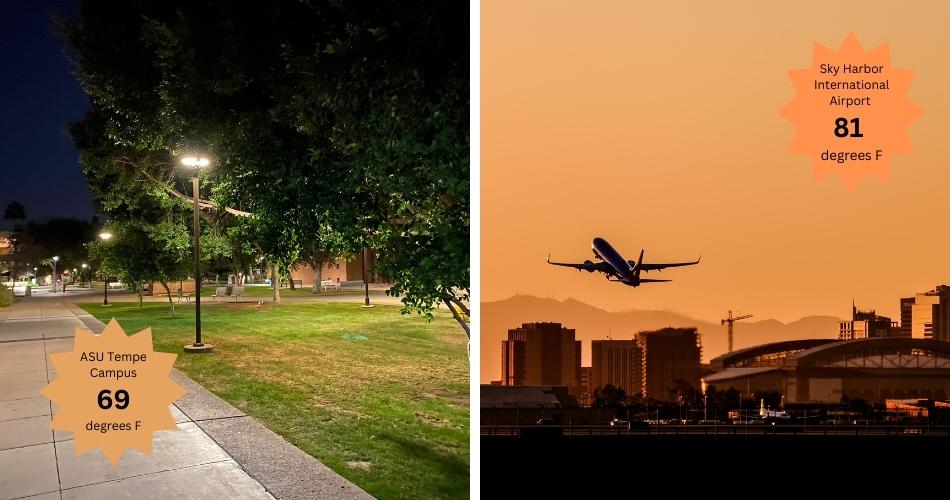
Rising Nighttime Temperatures
Deserts can be hot during the day, but the temperatures drop at night. Dropping nighttime temperatures has been the case in Maricopa County as well…until recently.
Now, summer nights rarely drop below 90 degrees, “a phenomenon that was exceedingly rare just a few decades ago.”
In native desert areas, the nights are much cooler than in suburban or urban areas. This rise in nighttime temperatures is because of how impermeable surfaces (such as asphalt in parking lots or cement or concrete in roads and buildings) hold onto heat and release it at night. Impermeable surfaces releasing the stored heat after the sun goes down have led to record-high nighttime temperatures.
For instance, according to AP News, in June 2017, ASU’s Tempe campus (filled with trees and grass) was 69 degrees Fahrenheit, while just a few miles away, Phoenix’s Sky Harbor International Airport was 81 degrees Fahrenheit, thanks to asphalt-covered runways and lots of buildings.
Our native plants and trees rely on those cooler nighttime temperatures to recover from the heat of the day. Many suspect that many saguaro cacti that collapsed during the summer of 2023 suffered due to the lack of cooler nighttime temperatures. https://blog.desertmuseum.org/2023/08/30/are-saguaros-dying-in-arizona/
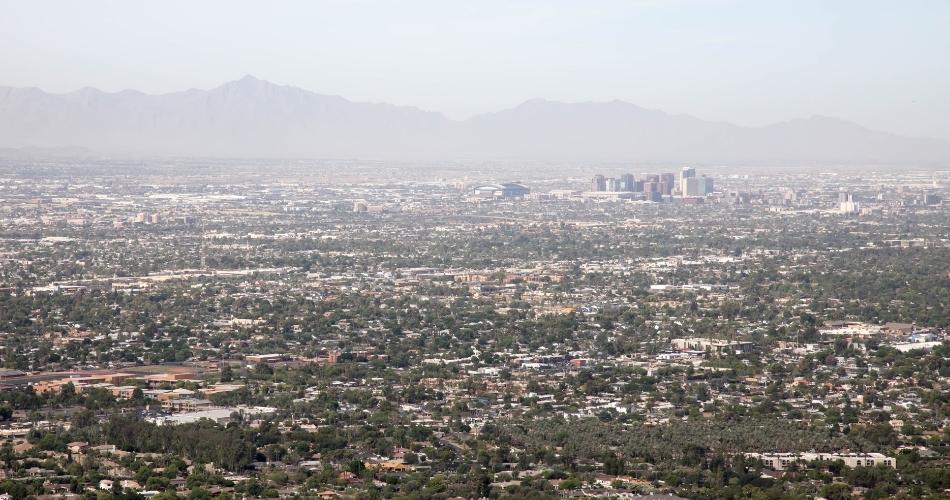
The Phoenix area is covered in haze caused by extreme heat.
How Urban Heat Islands Affect You
According to the Arizona State Climate Office, “The prolonged summer heat with maximum temperatures generally between 105 and 110 degrees in the Phoenix area causes some degree of fatigue in most people. Exhaustion and even heatstroke and sunstroke are possible with prolonged outdoor activity. This is especially true during much of July and August when the atmosphere becomes laden with tropical moisture.”
Heat has even been referred to as “Maricopa County’s Silent Killer,” stating that Maricopa County hospitals see about 1,500 heat-related hospital visits a year. Heat stroke, heat exhaustion, heat cramps, and heat rash are all possible outcomes from the heat. Those with respiratory or cardiac issues may experience more issues as well.
While negative health impacts are the most significant issue from rising temperatures due to urban heat islands, it’s not the only negative. As temperatures rise (and as they fail to fall at night), so will your energy costs.
The Phoenix area is sometimes covered by a “heat haze,” impacting visibility and air quality.
Heat islands can also impact your yard and garden. The first to suffer will be plants not native to our area, such as tropical trees and plants. Cactus and other succulents may also be impacted if nighttime temperatures continue to rise.
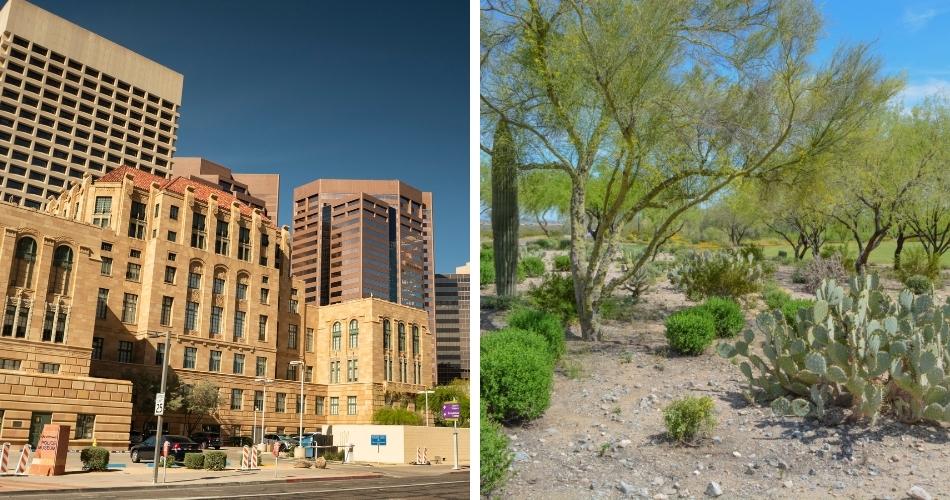
Native vegetation can reduce the effects of the urban heat island.
What You Can Do
Urban heat islands and their effects have been described as “no one’s responsibility but everyone’s concern.” While the construction of urban sprawl has led to the development of urban heat islands, there are still some ways you can mitigate the impact.
Plant more native trees. Native trees are best suited to survive our changing weather conditions.
How planting trees can reduce the urban heat island effect >>
Care for the trees and plants you have. Regular maintenance, including pruning, fertilization, and upkeep, can keep your mature trees shading your property for longer, lowering the temperature and reducing your energy costs.
Replace hardscaping with landscaping. Choose surfaces in which water can filter into the soil when possible. Add vines, trees, shrubs, and other native vegetation.
Consider adding water features. It’s even better to combine the water feature with rainwater harvesting!
What you can do to reduce heat islands from the United States Environmental Protection Agency >>
If you have any questions or need professional tree care to keep the trees and shrubs on your property thriving, contact Titan Tree Care today!
More Articles Like This

Titan Tree Care is a full-service tree care company located in Anthem, AZ and serving all of North Phoenix. We offer a wide range of services to meet your tree care needs, including tree and palm trimming, tree pruning, tree removal, stump grinding, and more. We also offer insect or disease treatments and fertilization services. We are dedicated to providing high-quality, safe, and effective tree care services to our customers and work hard to ensure that your trees are healthy and look their best.




